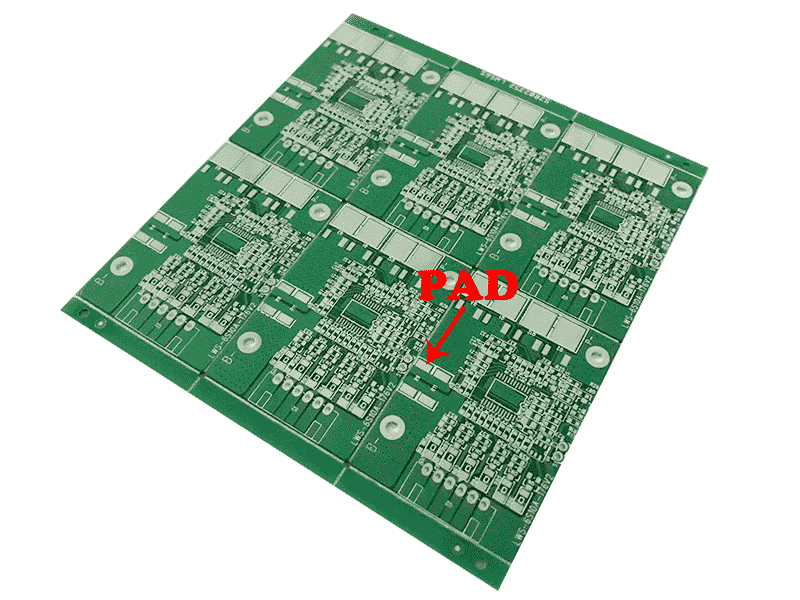When laying out PCB components, designers should consider the difference between the minimum spacing between components relative to the thickness of the components. Normally, the spacing between larger electronic components should be increased to avoid the addition of thin components, but it eventually causes welding defects. Secondly, the components are fixed on the PCB by soldering through the lead holes on the PCB, and the printed wires connect the pads to realize the electrical connection of the components in the circuit. In the process of soldering, if people do not understand this aspect, it is easy to damage the pads on the PCB, which will seriously cause the entire circuit board to be scrapped.
As mentioned above, the component is fixed on the PCB by soldering through the lead hole on the PCB. Then the lead hole and the surrounding copper foil are called the pad, which is the basic unit of surface mount assembly to form the circuit. The land pattern of the board is a combination of various lands designed for special component types.
Our common pad shapes are square pads, which are often used when the printed circuit board components are large and few, and the printed wires are simple. It is easy to use this kind of pad when making a PCB by hand. There is also a circular pad which is widely used in single and double-sided printed circuit boards with regularly arranged components. If the density of the board allows, the pad can be larger so that it will not fall off during soldering.
The size and design of PCB pads also have corresponding standards.
- The minimum single side of all pads is not less than 0.25mm.
- The maximum diameter of the entire pad is not more than 3 times the component aperture.
- In the case of dense wiring, it is recommended to use oval and oblong connection plates.
- The diameter or minimum width of the single-panel pad is 1.6mm; the weak-current circuit pad of the double-sided circuit board only needs to add 0.5mm for the hole diameter. If the pad is too large, it can easily cause unnecessary continuous soldering.
- A pad with an aperture of more than 1.2mm or diameter of more than 3.0mm should be designed as a diamond or plum-shaped pad.
- All machine inserted parts need to be designed as drip pads along the bent leg direction to ensure full solder joints at the bent leg.
- The pads on the large-area copper skin should be chrysanthemum-shaped pads, and there should be no virtual soldering.
Special attention is paid to the manual soldering on the PCB. Remember not to use a very high-temperature soldering iron or tin furnace to operate the pad because it will easily cause the pad to fall off, and it cannot be remedied.
Related Posts
- HDI PCB Layout and Basic HDI Design Guidelines
- 10 Tips To Improve PCB Design For Manufacturability
- PCB Design Software Free Download
- Five factors that FPC PCB designers should know about impedance control
- What are the aspects of PCB Design For Manufacturing (DFM) and Design For Assembly (DFA)?
- IPC Standards: A Guide to Standards for PCB Manufacturing and Assembly
- Solder Paste and Solder Paste Printing in SMT PCB Assembly
- What Is A Surface Mount Device Or SMD Component Package?
- A Free Software for PCB Design for Manufacturing or DFM Analysis














